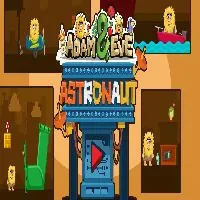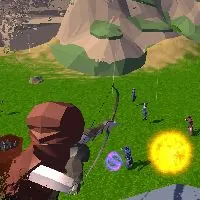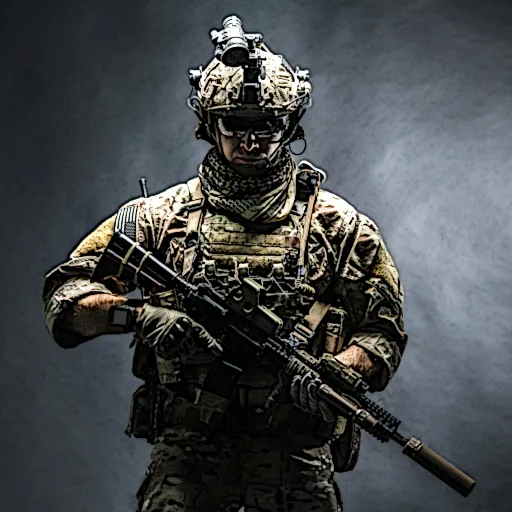SILLY WAYS TO DIE DIFFERENCES
SIMILAR GAMES
Description
Silly Ways to Die Differences - GitLab Games
About Silly Ways to Die Differences - GitLab Games
Welcome to GitLab Games, where we delve into the intriguing world of digital entertainment and interactive experiences. Our focus today is on a unique and often darkly humorous subject: the differences inherent in the various installments and interpretations of "Silly Ways to Die." While the core concept remains consistent – the often absurd and comical demise of characters – each iteration brings its own flavour, mechanics, and distinct set of humorous, yet fatal, scenarios. Understanding these distinctions is key to appreciating the evolution of this particular brand of interactive morbid curiosity. We aim to provide a comprehensive overview, highlighting the nuances that set each version apart, from the simplest graphical representations to more complex gameplay loops. This exploration is designed for those who appreciate the subtle, yet significant, divergences that contribute to the overall appeal and longevity of the "Silly Ways to Die" phenomenon.
The Evolution of Lethal Ingenuity
The journey of "Silly Ways to Die" is a testament to how a simple premise can be iterated upon and expanded, leading to increasingly creative, albeit often gruesome, outcomes. Early iterations were characterized by their straightforward presentation. The emphasis was on the immediate, often cartoonish, consequence of a wrong move. These initial versions laid the groundwork, establishing the recognizable visual style and the fundamental understanding that the player's objective was to navigate a series of perilous situations, ultimately failing in spectacularly amusing ways. The simplicity was their strength, allowing for quick engagement and immediate gratification through the spectacle of demise. The developers focused on delivering punchlines in the form of fatal interactions, ensuring that each failure was a memorable moment.
As the series progressed, we observed a significant increase in the complexity of the puzzles and the variety of environmental hazards. Developers began to introduce more intricate cause-and-effect relationships. Instead of a single, obvious mistake leading to a swift end, players might find themselves navigating multi-stage traps where a seemingly innocuous action could trigger a chain reaction of catastrophic events. This evolution demanded a more thoughtful approach from the player, moving beyond pure reaction to a degree of strategic planning, however short-lived that planning might be in the face of impending doom. The visual fidelity also saw improvements, with more detailed animations and environments that contributed to the immersive, albeit grim, experience. The narrative elements, while still secondary to the core gameplay, also began to be fleshed out, adding a layer of context to the characters' predicaments.
Core Gameplay Mechanics Differentiated
At the heart of any "Silly Ways to Die" experience lies its unique set of gameplay mechanics. While the overarching goal of avoiding a sticky end remains, the how of that avoidance, and indeed, the how of the inevitable failure, varies considerably. In some versions, the gameplay is heavily reliant on timing and precision. Players might need to execute a specific action within a narrow time window to avoid a deadly obstacle. A slight miscalculation can lead to instant, often hilarious, incapacitation. Think of precise button presses or swift mouse clicks to dodge a swinging blade or a falling anvil.
Other iterations lean more towards environmental interaction and puzzle-solving. Here, the player must carefully observe the surroundings and identify interactive elements. The challenge lies in understanding how these elements can be manipulated, either to progress safely or, more fittingly for the theme, to inadvertently trigger a deadly consequence. This might involve pulling levers in the correct sequence, using objects in unexpected ways, or understanding the physics of the game world to create a Rube Goldberg-esque path to disaster. The focus shifts from reflexes to cognitive deduction, albeit deduction aimed at achieving a comical, fatal outcome.
A further distinction can be found in the level of character agency and control. Some games offer direct control over a character's movement and actions, allowing for a more hands-on approach to peril. Others adopt a more observational or indirect control model, where the player influences events through strategic choices or by setting up conditions, but doesn't directly steer the character through every perilous moment. This difference in control scheme significantly impacts the player's perceived involvement and the nature of the mistakes that lead to a character's demise.
Variations in Character Design and Animation
The characters themselves, and the way they meet their unfortunate ends, are central to the "Silly Ways to Die" appeal. Across different versions, we see a spectrum of character design complexity. Some are rendered in a minimalist, almost stick-figure style, prioritizing clarity and immediate impact. These designs ensure that the focus remains squarely on the action and the resulting demise, with little distraction. The simplicity here amplifies the absurdity.
Conversely, other versions feature more detailed and anthropomorphic characters. These designs often imbue the characters with a degree of personality, making their comical suffering all the more poignant, or perhaps, just more entertaining. The animation quality is another critical differentiator. While early games might have featured more rudimentary, yet charmingly fluid, animations, later iterations boast sophisticated animation cycles that enhance the visual comedy of each death. The way a character contorts, reacts, and ultimately ceases to be is meticulously crafted to elicit a laugh. Exaggerated physics and ragdoll effects are often employed to further emphasize the silliness of their untimely end.
The variety of death animations is also a key area of divergence. Each game or level within a game typically presents a unique way for characters to perish. The ingenuity in dreaming up these disparate fates – from being flattened by oversized objects to being consumed by improbable culinary disasters – is a hallmark of the series. The sheer breadth of these inventive deaths is often a major draw for players looking for novelty and dark humour.
Thematic and Environmental Distinctions
Beyond the core mechanics and character presentation, the thematic and environmental settings play a crucial role in shaping the distinct identity of each "Silly Ways to Die" experience. Some versions are set in relatively mundane, everyday environments – a kitchen, a garden, a workshop. The humour here often stems from the juxtaposition of ordinary settings with extraordinary, fatal accidents. It highlights the inherent dangers lurking in the mundane.
Other iterations venture into more fantastical or exaggerated realms. We might find ourselves navigating treacherous castles, alien landscapes, or even abstract conceptual spaces. These settings allow for more outlandish and surreal death scenarios, unbound by the constraints of reality. The visual design of these environments is critical in establishing the mood and the types of perils players will encounter. A medieval dungeon will naturally present different challenges and deaths than a futuristic laboratory.
The narrative framing, while often light, can also provide a unique flavour. Is the player an accidental force of nature, a clumsy protagonist, or an unseen manipulator of fate? The perspective from which the "Silly Ways to Die" events unfold can subtly alter the player's engagement and the overall tone. Some versions might have a recurring cast of characters facing different predicaments, while others offer a fresh set of victims in each scenario. These thematic and environmental differences contribute to a rich tapestry of "Silly Ways to Die" experiences, ensuring that no two encounters with fatal hilarity are exactly alike. The overarching commitment to inventive, comical demises, however, remains a constant thread.
Interactive Challenges and Progression Systems
The way players are challenged and how they progress through a "Silly Ways to Die" game also exhibits notable variations. In simpler versions, the progression might be linear, with players moving from one standalone death scenario to the next in a fixed order. The challenge here is primarily in solving each individual puzzle or surviving each immediate threat. Success is measured by overcoming each distinct level or stage.
More complex installments often introduce meta-progression systems. This could involve earning points, currency, or unlocking new abilities or characters based on performance. Sometimes, players might be tasked with achieving specific objectives within a death scenario, adding an extra layer of challenge beyond simply surviving or failing in a silly way. These objectives could include collecting items, completing the death within a certain time frame, or achieving a particularly spectacular or elaborate demise.
The difficulty curve is another significant point of differentiation. Some games maintain a consistently challenging level, while others might offer a more gentle introduction before escalating the complexity and the sheer absurdity of the fatal predicaments. Understanding the intended difficulty and progression system is key to appreciating the design philosophy behind each particular "Silly Ways to Die" offering. Ultimately, the goal across all these variations is to deliver that unique blend of morbid fascination and laugh-out-loud amusement that has come to define this peculiar genre of interactive entertainment.
Conclusion: The Enduring Appeal of Absurd Endings
In conclusion, the "Silly Ways to Die" franchise, in its many forms, continues to captivate audiences through its unwavering commitment to creative, comical, and often downright absurd fatalities. While the fundamental premise of navigating perilous situations to a hilariously fatal conclusion remains constant, the differences in gameplay mechanics, character design, animation, thematic presentation, and progression systems provide a rich and varied landscape for players to explore. Each iteration, whether it emphasizes split-second reflexes, clever environmental interaction, or intricate puzzle-solving, offers a unique lens through which to view the spectacle of demise. The evolution of these games showcases a dedication to pushing the boundaries of humorous catastrophe, ensuring that each encounter with "Silly Ways to Die" is a memorable, if not entirely uplifting, experience. We at GitLab Games are proud to dissect these nuances, allowing for a deeper appreciation of the ingenuity and dark humour that underpins this enduring genre.
Play Silly Ways to Die Differences for free on GitLab Games, where we offer a dynamic platform featuring thousands of the best unblocked games online. Our extensive library ensures pure enjoyment with an ad-free experience, keeping you immersed in the action without distractions. Accessible from school, work, or home, our Gitlab games deliver seamless fun anywhere you are. We’ve streamlined the experience—play effortlessly with your keyboard or a simple click, tailored to how you like to game. Dive into our collection of unblocked games, including popular categories like unblocked games 66, unblocked games wtf and cool math games Gitlab, and enjoy entertainment that’s always within reach and endlessly captivating.
















































